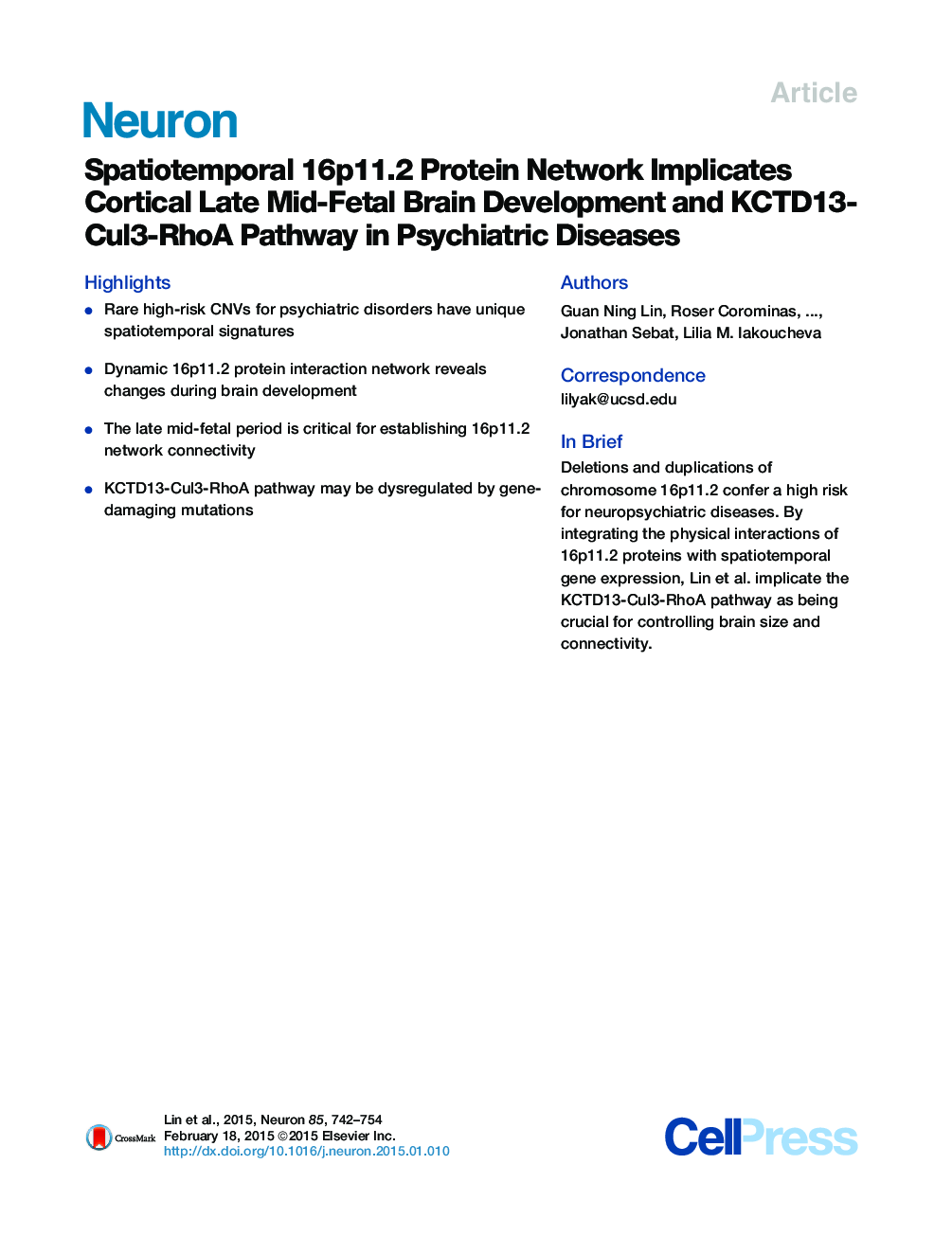| Article ID | Journal | Published Year | Pages | File Type |
|---|---|---|---|---|
| 4320889 | Neuron | 2015 | 13 Pages |
•Rare high-risk CNVs for psychiatric disorders have unique spatiotemporal signatures•Dynamic 16p11.2 protein interaction network reveals changes during brain development•The late mid-fetal period is critical for establishing 16p11.2 network connectivity•KCTD13-Cul3-RhoA pathway may be dysregulated by gene-damaging mutations
SummaryThe psychiatric disorders autism and schizophrenia have a strong genetic component, and copy number variants (CNVs) are firmly implicated. Recurrent deletions and duplications of chromosome 16p11.2 confer a high risk for both diseases, but the pathways disrupted by this CNV are poorly defined. Here we investigate the dynamics of the 16p11.2 network by integrating physical interactions of 16p11.2 proteins with spatiotemporal gene expression from the developing human brain. We observe profound changes in protein interaction networks throughout different stages of brain development and/or in different brain regions. We identify the late mid-fetal period of cortical development as most critical for establishing the connectivity of 16p11.2 proteins with their co-expressed partners. Furthermore, our results suggest that the regulation of the KCTD13-Cul3-RhoA pathway in layer 4 of the inner cortical plate is crucial for controlling brain size and connectivity and that its dysregulation by de novo mutations may be a potential determinant of 16p11.2 CNV deletion and duplication phenotypes.
